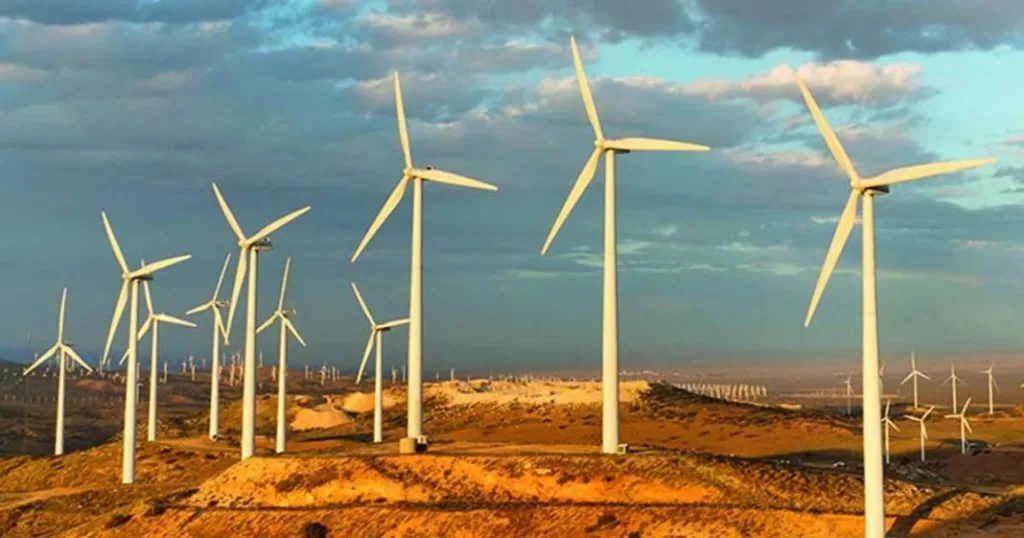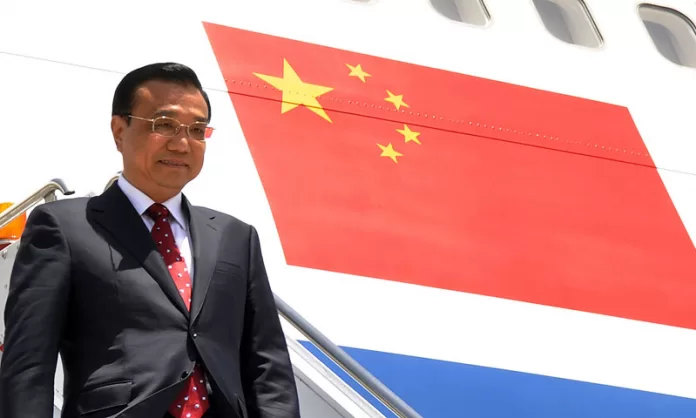Most recently, the Chinese Premier Li Keqiang visited Pakistan. Both countries share strategic trust, mutual respect which continues to flourish and deepen despite various regional and international geo-strategic problems and emerging trends and hopefully after this official visit of Chinese premier the bilateral relations would further enhanced.
Chinese Premier said “China will continue to support Pakistan and promote bilateral relations in all fields,” “China will give you every support and assistance and by helping you, we have to help ourselves,” he added.
During his official visit to Pakistan China successfully took over the operational control of Gwadar Port. The contract of operation of Gwadar Port has been given to China Overseas Ports Holding Company Limited. The Chinese would help link coastal highway with the port besides would start trans-shipment. It will connect China to the Arabian Sea and Strait of Hormuz, a gateway for the world oil trade. It would cut thousands of kilometres (kms) off the distance, which oil and gas imports from Africa and the Middle East have to travel to reach China.
The Gwadar Port has the potential to serve as a secure outlet as well as storage and trans-shipment hub for the Middle East and Central Asia oil and gas supplies through a well-defined corridor passing through Pakistan. China has contributed about $198 million of the initial investment for the port project. It is expected that Chinese companies and exporters would handle their own cargo and this would make Gwadar Port one of the busiest in the region.
Moreover, China will likely re-launch the Gwadar oil refinery project, which was halted in 2009 because of security concerns in the province. The refinery will have a total capacity of 19 million tonnes of oil per year. The proposed refinery and the oil pipeline is actually a part of a planned Pakistan-China energy corridor.
Gwadar Port will be connected with China’s western province of Xinjiang through rail and road links. China’s eastern seaboard ports are 3,500 kms away from the city of Kashgar in western China whereas the distance from Kashgar to Gwadar Port is only 1,500 kms. On January 30, 2013 the Federal Cabinet Committee had approved the transfer of Gwadar Port to China.
According to BOI (March, 2013), reciprocal trade between Pakistan and China in 2011 was $10.6 billion, which increased by 17.6 percent to a total volume of $12.4 billion in 2012 first time in the history of Pakistan. Hopefully it would surpass of $15 billion by 2012. The imports were increased by 9.9 percent to a volume of $9.2 billion while the exports enhanced by 48.2 percent to a volume of $3.14 billion. Chinese companies’ business in Pakistan involves in the fields of infrastructure construction, manufacturing, energy, mining, telecommunication, finance, agriculture etc.
According to Reap Exporters Association of Pakistan (REAP) China a fresh key player in Pakistani rice market in the fiscal year 2011-12 looks to be the largest export market in the next fiscal 2012-13, as it purchased around 0.36 million tonnes last year and is expected to purchase a minimum of around 0.45 million tonnes during 2012-13 fiscal. It would further increase our cooperation in the fields of agriculture, food technology and hybrid farming in the days to come.
A major develop ment in bilateral trade was the Preferential Trade Agreement (PTA) signed in 2003 which was followed by a Free Trade Agreement (FTA) in 2006. In the past three years, Pakistani exports to China have almost tripled to $ 3.14 billion. China is currently Pakistan’s largest single country trading partner and Pakistan is China’s second-largest trading partner in South Asia. Now both countries also have currency swap agreement which would further deepen the socio-economic ties. It is hoped that to start work on Pakistan Agriculture Demonstration Zone, formation of Young Entrepreneurs Forum and annual Pak China Trade and Investment Forums in Beijing and Islamabad would pay dividends in the near future.
In 2011, both countries established a Joint Energy Working Group that now coordinates implementation of energy projects, including hydro, thermal, coal fired and alternate energy. China and Pakistan should make the cooperation on power generation a priority, Chinese Premier Li Keqiang said, as Pakistan seeks to end an energy crisis that triggers power cuts of up to 20 hours a day, bringing the economy to a near standstill. China is already assisting Pakistan in several energy projects that include nuclear reactors. It has already provided two reactors, each with a capacity of 300MW, at Chashma in Punjab. The two countries are also planning to build two more reactors with the same capacity.
In this connection, most recently, EXIM Bank of China has signed an agreement with the government of Pakistan to provide $448 million for 969 MW-Neelum Jhelum Hydropower Project. Neelum Jhelum Hydropower will generate much needed low-cost hydel electricity to help mitigate power shortages in the country. At present the construction work on all sites of the project is progressing satisfactorily. Out of total 67-kilometre (km) tunnels, 34.24 km long tunnels (51%) have so far been excavated, while excavation of underground power house stands at 75.24 percent and transformers hall at 96.33 percent. De-sander of the project is 95 percent complete and Nauseri Bridge over River Neelum is 100 percent complete. Second stage diversion of the River Neelum has also been completed.
Pak-China extended energy cooperation
China Three Gorges Corp (CTGPC) China’s largest hydropower developer is ready to invest $15 billion in Pakistan’s energy sector, an investment that could hopefully add 10,000 megawatts to Pakistan’s main grid over the next 10 years. The corporation also offered to develop multipurpose hydroelectric projects through direct financing model based on 3Ps i.e. public private partnership.
The Chinese companies showed their keenness to invest $10 to $15 billion for the development of power sector in Pakistan which has around 175 billion tonnes of coal deposits in Thar. China has the expertise in coal energy which must be utilized for the tapping of Thar coal reservoirs.
Details of the Hydro-power Projects
Pakistan is passing through a severe energy crisis. It badly needs construction of big and small hydro-projects in the country to overcome the persisting energy shortage. The projects of hydropower i.e. Kohala Hydro Power (1100 MW), Bhunji (7100 MW), Bhasha, Dashu in Upper Indus Valley, and other Hydro Power projects in lower Indus valley were thoroughly discussed most recently with the Chinese representatives of public-private sector. China Three Gorges Project Corporation (CTGPC) signed an agreement with a private Pakistani firm, Associate Technologies (Private) Limited to invest $1.2 billion in 720 MW Karot Hydropower Project. The Karot project would be completed in four years and help Pakistan to overcome load-shedding problem.

Pak-China alternative energy cooperation
Chances are very bright for the development of alternative energy resources/projects in the country. Many Chinese companies have already offered their assistance in this regard. China has also offered to start construction of 50 MW wind power project in Jhimpir (Sindh) and which will be completed in 2012. Furthermore it has also planned to install 2000 MW wind power. China has also planned to invest in the 300 MW solar power projects in Pakistan.
Government’s strong commitment
On its part the government of Pakistan has already issued letter of interest for the Karot Hydro electric project with 720 MW generation capacity. Its feasibility has already been approved and the project is currently at tariff petition stage. MOU for the Taunsa hydro eclectic project with 120 MW generation capacity has been signed and the joint development agreement of the project will be signed very soon. The Kohala hydro power project with generation capacity 1100 MW electricity is ready for tariff negotiations as the letter of interest of the project has been issued and the updated feasibility study already approved. Bunji hydroelectric project another mega energy project being undertaken by the Three Gorges Project Corporation with 7100 MW generation capacity is ready for site survey as the MOU for the project was signed in august 2009.
Details of ongoing energy projects
The extended bilateral energy cooperation also consists of ongoing wind projects namely Karachi first wind farm, Karachi second wind farm and Punjab wind and solar projects are also at its advanced stages. The government of Pakistan also shows its intention to build a run of the river hydro project at Sukkur Barrage with China Three Gorges Project Corporation. Moreover, Joint Development agreement was due to be signed this month for the 120 Megawatt Taunsa Hydro electric project where the discharge is 10,000 cusecs is ready for joint development agreement.
During the recent visit of Chinese Premier Li Keqiang both countries inked 12 agreements and memoranda of understanding (MoUs) that mainly included the long-term economic corridor plan, maritime cooperation and satellite navigation. Detail is given below as:
(a) A MoU on maritime cooperation between the two governments, an agreement on boundary management system between China’s Xinjiang and Gilgit-Baltistan area, and another agreement on border ports and their management system was signed.
(b) MoU on cooperation for long-term plan on China-Pakistan economic corridor between the two governments was inked by Chairman National Development and Reform Commission, China, and Adviser to the Prime Minister.
(c) China’s Minister for Commerce and Pakistan’s Secretary Economic Affairs Division signed the agreement on economic and technical cooperation and the handing over certificate of seismographic network.
(d) An MoU on cooperation in the field of marine science and technology between the State Oceanic Administration (SOA) of China and the Ministry of Science and Technology of Pakistan was signed by Administrator SOA and Secretary Ministry of Science and Technology.
(e) Agreement between China Satellite Navigation Office (CSNO) and Pakistan Space and Upper Atmosphere Research Commission for Cooperation (Suparco) was inked by Director CSNO and Major General (R).
(f) Agreement on establishment of Confucius Institute at the Karachi University was signed by Head of National Office for Chinese Language, and Vice Chancellor Karachi University.
(g) Annual Blister Purchase Contract and Greige Fabric Contract were also inked.
All the chambers of commerce of the country highly appreciated Chinese Prime Minister Li Keqiang’s visit to Pakistan that will help open up new avenues of cooperation besides reinforcing the economic partnership between the two countries as in the era of globalisation, interdependence is the basic feature defining state-to-state relations.
Conclusion
The people Republic of China is our strategic time-tested and trustworthy friend. Energy cooperation between the two countries has multiplier effects and would pay dividends in the days to come. Keeping in view the emerging geo-political and geo-strategic scenarios in the region both the countries should also enhance defence cooperation and meaningful security pacts.
Pakistan and China share an exemplary friendship which should be translated into deepen cooperation, coordination and political commitment on all possible fronts of socio-economy, trade and commerce, joint venture and the last but not the least FDIs.




